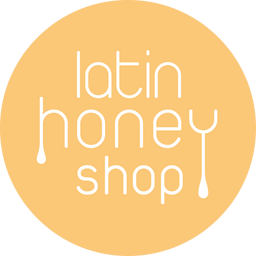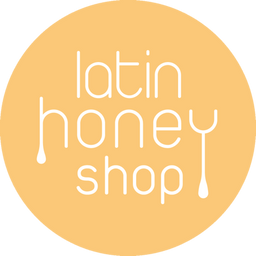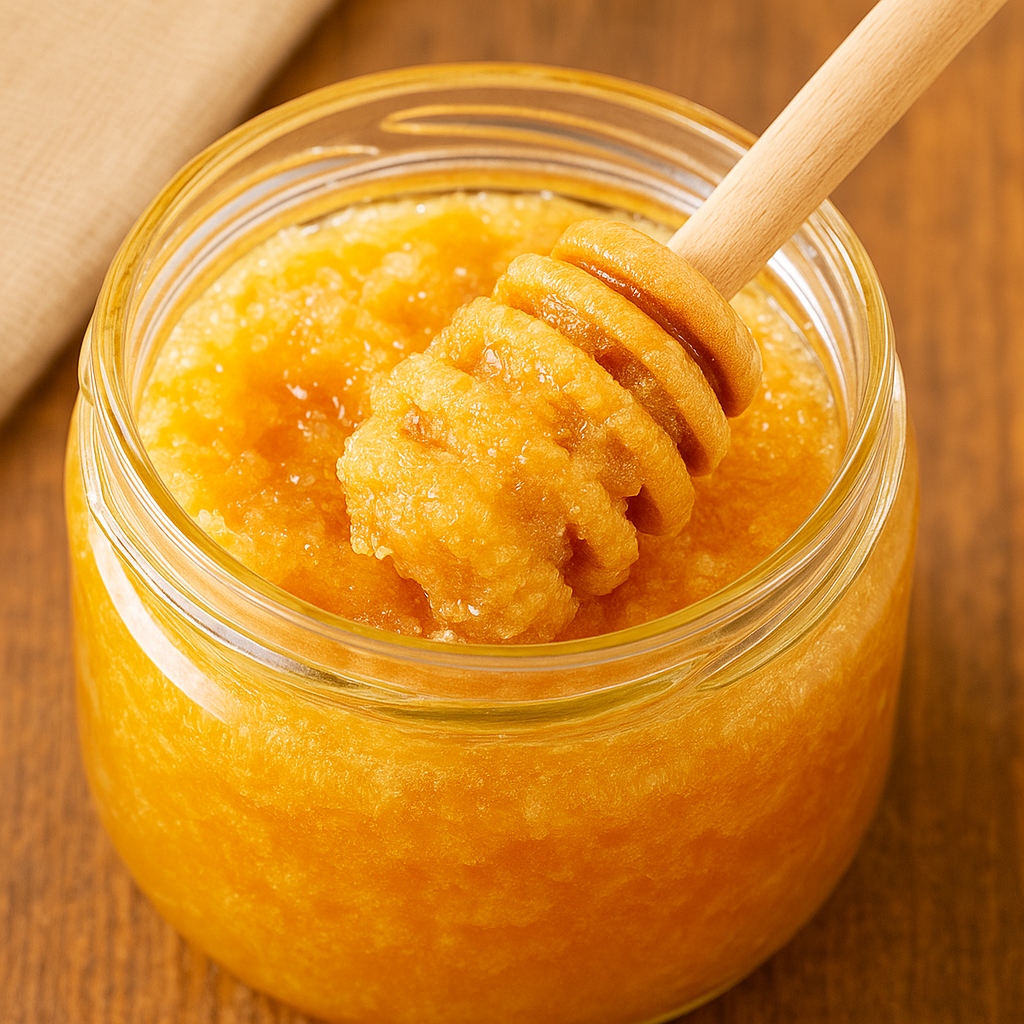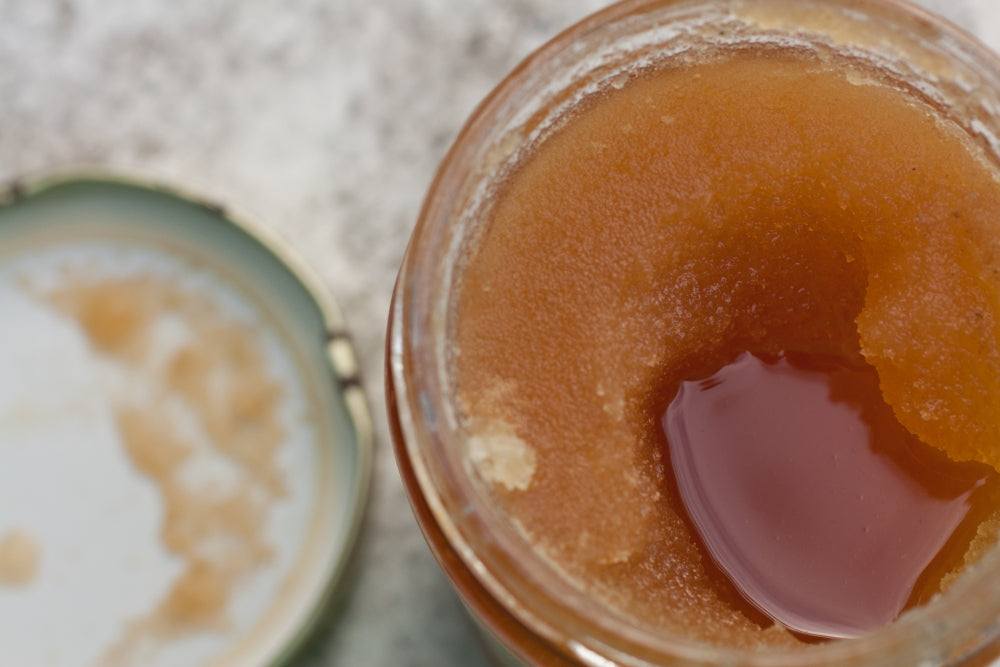Let customers speak for us
Featured Posts


20+ ACTIVE Raw Organic Coffee Bean Honey from Mexico 227g
181.00 SR
Antibiotic medical grade honey equal to 20+ TA MGO 829 manuka honey, our most powerful honey. (Like all our honeys, this is pure honey with nothing added and nothing taken away.)
In August 2019 this won a Two-Star Great Taste Award from the UK Guild of Fine Food. Known as the "oscars" of the fine food world, thousands of food products enter the annual Great Taste awards but only very few win two-star awards. Read on for the judges' comments.
Description
227g net weight in a glass jar
The world's first bioactive coffee bean honey. The tastier and affordable alternative to manuka honey.
Lab certified 20.5 antibacterial Total Activity (see certificate).
Equal to TA 20+ MGO 829 manuka honey which costs up to £100 a jar.
Why spend £100 on a 250g jar of Comvita manuka 20+ honey when you can get a tastier 20+ honey for less?
From bees feeding on arabica coffee bean plantations in Chiapas, Mexico, one of the world's finest coffee producing regions.
Raw (unpasteurised), none of the pollen has been filtered out
Certified organic GB-ORG-04
Crystallised, with tasting notes of vanilla, molasses and chocolate coffee (mocha)
The judges who awarded this honey a Two-Star Great Taste Award described it:
"Visually enticing, this honey has a rich caramel colour. The honey tastes like caramel with floral notes. It melts on the tongue and is very moreish."
"A deeply caramel coloured honey. The aroma is of toast and toffee- hugely pleasant. The flavours are deep and long lasting."
"There is a perceptible coffee note here, which we weren't necessarily expecting, but it has a pleasant, almost savoury, certainly mineral presence. It balances the sweetness well."
Read on for more details about the origin, taste and uses of this crystallised honey.
Origin
Indigenous tribes in Mexico have been farming coffee for hundreds of years. Today, Mexico produces some of the world's finest organic coffee.
But the best organic coffee in Mexico is grown in the beautiful mountain highlands of Chiapas state in southern Mexico, which lie 1000-1500m above sea level.
The indigenous tribes of Chiapas manage 1500 independent coffee plantations as the main source of their livelihood.
The Coffea arabica plant is native to the mountains of Yemen. It was the first species of coffee to be cultivated.
Coffee honey with a 16% coffea pollen count is considered good coffee honey. This honey has a coffea pollen count of 40%, which means that it is exceptional.
Taste
Tasting notes: Vanilla and molasses with a light chocolate coffee (mocha) aftertasteTexture: crystallised (sets quickly due to the high pollen content)Aroma: dark chocolateSweetness: sweet
Uses
In accordance with EU directive 1924/2006 we are unable to make any health claim about any of our honeys. The information given below is either background information about the plants from which our honey comes, or anecdotal based on customer reviews. It should not be inferred from the plant properties that this honey automatically possesses the same qualities or provides the same benefits as the plant.”
This honey has a lab certified antibacterial Total Activity rating of 20.5. This means that it is equal to a 20.5% antibacterial solution.
It can be consumed like any other honey or applied on the skin in small amounts.
A 2016 study by Sao Paolo State University in Brazil found that coffee bean honey contained:
- High levels of Vitamin C (29.5mg / 100g), the same as grapefruit.
- More potassium (96mg / 100g) than bananas..
- More calcium (34mg / 100g) than cauliflower.
A 2015 study by Chiang Mai University in Thailand found that coffee bean honey contained:
- A higher antibacterial content than other honeys
- A higher flavonoid content than every other honey, including manuka
- The highest anti-tyrosinase activity among 16 other honeys. Tyrosinase inflames the skin and causes pigmentation issues.
This honey can be used like ordinary honey but is best taken as a half teaspoon of this honey mixed into a glass of cool or warm (not hot) water and drunk three times a day on an empty stomach.
References:
1. Moura Kadri, Samir & Zaluski, Rodrigo & Lima, Giuseppina & Mazzafera, Paulo & Orsi, Ricardo. (2016). Characterization of Coffea arabica nonofloral Honey from Espírito Santo, Brazil. Food Chemistry. 203. 10.1016/j.foodchem.2016.02.074.
2. Jantakee, Kanyaluck and Yingmanee Tragoolpua. Activities of different types of Thai honey on pathogen1c bacter1a causing skin d1seases, tyros1nase enzyme and generating free radicals. Biological research vol. 48,1 4. 16 Jan. 2015, doi:10.1186/0717-6287-48-4
Note: unless where specifically mentioned, none of these statements have been clinically proven in scientific trials and none of these statements constitute a claim as to any health benefit. Please contact us for links to the various scientific studies cited in these statements.


15+ ACTIVE Raw Organic Amazon Jungle Honey From Brazil 227g
129.00 SR
Antibiotic medical grade honey equal to 17+ TA MGO 631 manuka honey.
In September 2022 this won a Two-Star Great Taste Award from the UK Guild of Fine Food. Known as the "oscars" of the fine food world, thousands of food products enter the annual Great Taste awards but only very few win two-star awards. Read on for the judges' comments.
Description
227g net weight in a glass jar
The world's first bioactive honey from the Amazon rainforest in Brazil. A tastier and affordable alternative to manuka honey.
Lab certified 17.0 antibacterial Total Activity (see certificate).
Equal to TA 17+ MGO 631 manuka honey which costs up to £60 a jar.
Why spend £60 on a 250g jar of Comvita manuka 15+ honey when you can get a tastier 15+ honey for less?
From bees feeding in the Amazon rainforest, the most biodiverse region on the planet.
Raw (unpasteurised), none of the pollen has been filtered out
Certified organic GB-ORG-04
Crystallised, with tasting notes of smoked tropical fruits and an aftertaste of papaya
The judges who awarded this honey a Two-Star Great Taste Award described it:
"This honey is thick and crystalline in texture and appearance. The aroma on the nose is distinctly of forest floor which follows through on the palate. The floral and leafy flavours linger on the palate with great length."
"A thick, granular honey. On the nose this promises a lot and doesn't disappoint on the palate: the aromas are highly perfumed and aromatic, and every sense is heightened."
"What an experience. It has a wonderful chew and deep, complex floral character that persists and opens out with length and made us all very happy! A unique, special product."
Read on for more details about the origin, taste and uses of this crystallised honey.
Origin
The Amazon jungle is the world's largest tropical rainforest. It is the lifeblood of the world’s largest ecosystem that spans about two-fifths of the South American continent. More than half all the plant species on the plant are found in the Amazon jungle. It is known as the lungs of the planet due to the amount of oxygen it releases into the atmosphere.
To date, at least 40,000 plant species, 427 mammals (e.g. jaguar, anteater and giant otter), 1,300 birds (e.g. harpy eagle and toucan), 378 reptiles (e.g. anaconda), more than 400 amphibians (e.g. dart poison frog) and around 3,000 freshwater fishes including the piranha have been found in the Amazon.
The pollen composition of this honey is:
97% pink Mimosa silk tree
3% other
Taste
Tasting notes: Smoked tropical fruits and an aftertaste of papaya
[Note: This honey does NOT contain any trace of fruit; it is pure, natural honey.]
Texture: Partially fine crystallised set honey
Aroma: Intensely perfumed jungle aroma
Sweetness: medium
Uses
In accordance with EU directive 1924/2006 we are unable to make any health claim about any of our honeys. The information given below is either background information about the plants from which our honey comes, or anecdotal based on customer reviews. It should not be inferred from the plant properties that this honey automatically possesses the same qualities or provides the same benefits as the plant.
The pink Mimosa silk tree has been used medicinally by Mayan civilisations for over 1000 years to relieve a wide range of conditions and ailments.
The pink Mimosa silk tree has been used in Chinese remedies for nearly 2000 years as a natural calming herb. It is known as the "tree of happiness" or the "happiness herb."
There is scientific research based support for the use of the Mimosa tree to relieve worry, stress and sleep issues.
[See Jung JW et al. Effect of chronic Albizzia julibrissin treatment on 5-hydroxytryptamine1A receptors in rat brain. Pharmacol Biochem Behav . 2005;81(1):205-210.]
In fact, a pharmacoepidemiologic study in Taiwan in 2002 found that the Mimosa tree was the third most commonly prescribed Chinese herbal remedy for treating sleep problems.
[Chen FP et al. Prescriptions of Chinese Herbal Medicines for Insomnia in Taiwan during 2002. Evid Based Complement Alternat Med . 2009 Apr 1]
This honey can be used like ordinary honey but is best taken as a teaspoon of this honey mixed into a glass of cool or warm (not hot) water and drunk three times a day on an empty stomach.
Note: unless where specifically mentioned, none of these statements have been clinically proven in scientific trials and none of these statements constitute a claim as to any health benefit. Please contact us for links to the various scientific studies cited in these statements.


Raw Organic Pacific Avocado Honey from Mexico 227g
78.00 SR
NEW 2025 STOCK
THIS HONEY WAS AWARDED A 2020 3-STAR GREAT TASTE AWARD BY THE UK GUILD OF FINE FOOD AND FEATURED IN THE TIMES (UK) NEWSPAPER AS ONE OF THE TASTIEST FOOD PRODUCTS IN THE UK.
Description
A dark, buttery-silky smooth honey with tasting notes of black treacle, maple syrup and avocado, our Raw Organic Pacific Avocado honey from the Pacific coast of Mexico.
With over 25 vitamins and minerals in each fruit, the avocado contains some of the highest levels of health promoting properties known to exist.One of the rarest honeys in the world, this honey comes from bees that feed on avocado trees in the world's oldest and largest avocado plantation, 5000ft high in the mountains of Michoacan province in western Mexico.With an incredible number of bioactive compounds, the avocado plant is used around the world to relieve the symptoms of conditions from anaemia to skin issues.Mixed in water this honey makes a nutritious, refreshing and tasty drink. It is delicious with premium vanilla ice cream or thick Greek yoghurt.
Mix a teaspoon into a glass of cold organic milk and add a pinch of salt for an organic salted caramel milkshake!
Size: 227g (1/2lb) net weight in a glass jarColour: dark amber / black silkySet/runny: runny (crystallises in cold weather with fine crystals)Organic: certified organic by the Organic Food Federation (UK), GB-ORG-04
Read on for more details about the origin, taste and uses of this honey.
Origin
12,000 years ago, Mexico was home to the first avocado trees known to man. Today, the region of Michoacan on the Pacific coast of western Mexico produces half of the world's avocado crop.
Our Raw Organic Pacific Avocado Honey is produced by bees that feed on the nectar from these avocado trees, which are situated 5000ft high on the mountain slopes of Michoacan.The avocado tree grows 20m high with leaves 12-25cm long and small green-yellow flowers 5-10mm wide. It only grows in tropical or subtropical climates.
Taste
Tasting notes: Bold, rich, woody, smoky, burnt sugar and caramel notes that mellow into maple syrup and black treacle with a subtle aftertaste of avocado
Texture: Buttery smooth black texture that is silky on the tongue but dissolves quickly
Aroma: Strong, lactic as if fermenting, similar to cooked butter and warm chestnut
Sweetness: medium
Mixed in cold water, this honey makes a nutritious, refreshing and tasty drink. With thick Greek yoghurt, it makes a healthy snack or breakfast. Drizzled on top of premium vanilla ice cream, it makes a delicious dessert.
Mix a teaspoon into a glass of cold organic milk and add a pinch of salt for an organic salted caramel milkshake!
Uses
In accordance with EU directive 1924/2006 we are unable to make any health claim about any of our honeys. The information given below is either background information about the plants from which our honey comes, or anecdotal based on customer reviews. It should not be inferred from the plant properties that this honey automatically possesses the same qualities or provides the same benefits as the plant.
The avocado fruit contains an incredible amount (over 25) of vitamins, minerals and antioxidants and some of the highest levels of health-promoting properties known to exist.With a high number of bioactive compounds, the avocado fruit is said to offer many of the same health properties as an aloe vera plant.When used as a face mask avocado extracts can promote healthy, supple skin.Avocado extracts can be used as a hair conditioner for dry, damaged hair and to promote shiny, vibrant hair.Avocados contain carotenoid lutein in far higher concentrations than in any other fruit. Lutein is essential for protection against age-related macular degeneration and cataracts.Avocado extracts are also used:- to neutralise unpleasant breath- as a natural treatment for dandruff- to accelerate menstruation- to combat viruses including herpes- during pregnancy due to its exceptionally high vitamin, mineral and folic acid content- to relieve symptoms of psoriasisScientific studiesA study in Shizuoka University, Japan, in 2000, found that compounds naturally present in avocados can help reduce liver disease.
A 2005 study in Tufts University, Massachusetts, USA, found that avocados are high in lutein, which helps protects eyesight against cataracts and macular degeneration.
A 2016 study at the University of Santa Maria, Brazil, found that avocados are one of the most nutrition-dense fruits on the planet.
This honey can be used like ordinary honey but is best taken as a teaspoon of this honey mixed into a glass of cool or warm (not hot) water and drunk once a day on an empty stomach 30 minutes before breakfast.
Note: unless where specifically mentioned, none of these statements have been clinically proven in scientific trials and none of these statements constitute a claim as to any health benefit. Please contact us for links to the various scientific studies cited in these statements.


Raw Organic Pink Lychee Honey From Mexico 227g
67.00 SR
This honey won a Two Star Great Taste Award from the UK Guild of Fine Foods, in the annual "oscars" of the fine food world.
Description
227g net weight in a glass jar.Monofloral organic honey from bees feeding on organic lychee tree plantations in the tropical Atlantic coast of Veracruz, Mexico.A crystallised honey set with natural honey crystals with an intensely floral aroma, tasting notes of jasmine flowers and the cool, tingling aftertaste of lychee fruit.As each crystal dissolves in your mouth you experience an intense burst of flavour that lasts long after the honey disappears into your body.[Note: This honey does NOT contain any lychee fruit extract, added flavour, sugar or ingredients; it is pure, natural honey.]It is raw, certified organic, unfiltered, unpasteurised and living... as natural as if you collected it yourself.
In August 2022, this honey won a Two Star Great Taste Award from the UK Guild of Fine Foods, in the annual "oscars" of the fine food world. The awarding judges said:
"Grainy, with a very strong and surprising lychee flavour. An original, unusual, deep, dark intense honey. Fruity and floral, this really is a talking point.""This honey gives a depth of flavour unexpected but long lasting and fragrant. Its wonderful taste is delicate but full of flowery notes which allow the texture of crystals enhance the taste even more, extending the pleasure of eating this raw honey.""A honey with a lovely fresh aroma and acidity. It is fruity and delicious and has a pleasing, juicy, almost citrusy feeling in the mouth. The slightly grainy texture was very enjoyable, and overall we found it a very uplifting honey that would have a variety of uses."
This honey tastes delicious straight from the spoon or mixed into cold water, makes a nutritious and refreshing drink.Size: 227g (1/2lb) net weight in a glass jarColour: light amberSet/runny: crystallised honey set with natural honey crystalsOrganic: certified organic by the Organic Food Federation (UK), GB-ORG-04Read on for more details about the origin, taste and uses of this crystallised honey set with natural honey crystals.
Origin
Lychee (sometimes spelt litchi) is a soft, whitish-pink coloured pulpy fruit that is cultivated in tropical and sub-tropical regions and is available for a very short period of time during the summer months.Lychee (Litchi chinensis) is an evergreen tree that grows to 15-28m high. Bees feed on its flowers to produce this honey.
Taste
Tasting notes: Caramel and jasmine flowers with the cool, tingling aftertaste of juicy lychee fruits Texture: part-runny, part crystallised (sets quickly due to the high pollen content)Aroma: intense floralSweetness: sweet
Uses
In accordance with EU directive 1924/2006 we are unable to make any health claim about any of our honeys. The information given below is either background information about the plants from which our honey comes, or anecdotal based on customer reviews. It should not be inferred from the plant properties that this honey automatically possesses the same qualities or provides the same benefits as the plant.
At least 65% of this honey comes exclusively from lychee fruit flowers.Lychee is a nutritious bioactive fruit high in Vitamin C with an incredible number of flavonoids and other health-promoting compounds.There have been a number of scientific studies on the anti-diabetic effect of lychee extract on both humans and rats. Modern pharmacological studies have identified that some components of lychee seed have the effects of modulation of blood sugar by improving insulin resistance (IR), lowering blood lipids, antioxidation, antivirus, anti-tumor and preventing liver injury.It can be consumed like any other honey or applied on the skin in small amounts.A 1986 study in China found that lychee extract improved insulin resistance when given to Type 2 diabetic patients.A 2010 study published in the British Journal of Nutrition found that oligonol, a compound occurring naturally within lychee fruits, reduced liver damage associated with diabetes.A 2010 study at the University of Texas Health Science Center, USA found that oligonol displayed antiviral activity against the flu virus.A 2010 study at the Chinese Academy of Sciences found that lychee fruit extracts displayed antiviral activity against several viruses, including the herpes virus.This honey can be used like ordinary honey but is best taken as a teaspoon of this honey mixed into a glass of cool or warm (not hot) water and drunk once a day on an empty stomach 30 minutes before breakfast.
If you suffer from an existing health condition, always consult a medical professional before introducing something into your diet to help relieve the symptoms of that condition.
References:1. H. Zhang & Y. Teng, “Effect of li ren (semen litchi) anti-diabetes pills in 45 cases of diabetes mellitus,” Journal of Traditional Chinese Medicine, vol. 6, no. 4, pp. 277–278, 1986.2. J. S. Noh et al, “Treatment with oligonol, a low-molecular polyphenol derived from lychee fruit, attenuates diabetes-induced hepatic damage through regulation of oxidative stress and lipid metabolism,” British Journal of Nutrition, vol. 106, no. 7, pp. 1013–1022, 2011.3. Gangehei L, et al, "Oligonol a low molecular weight polyphenol of lychee fruit extract inhibits proliferation of influenza virus by blocking reactive oxygen species-dependent ERK phosphorylation." Phytomedicine. 2010;17(13):1047-1056.Note: unless where specifically mentioned, none of these statements have been clinically proven in scientific trials and none of these statements constitute a claim as to any health benefit. Please contact us for links to the various scientific studies cited in these statements.














